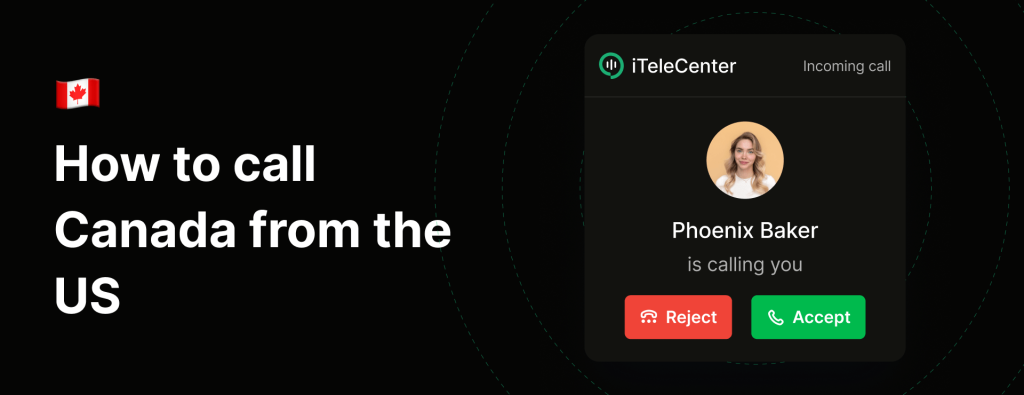The 5 best Skype alternatives you need to try
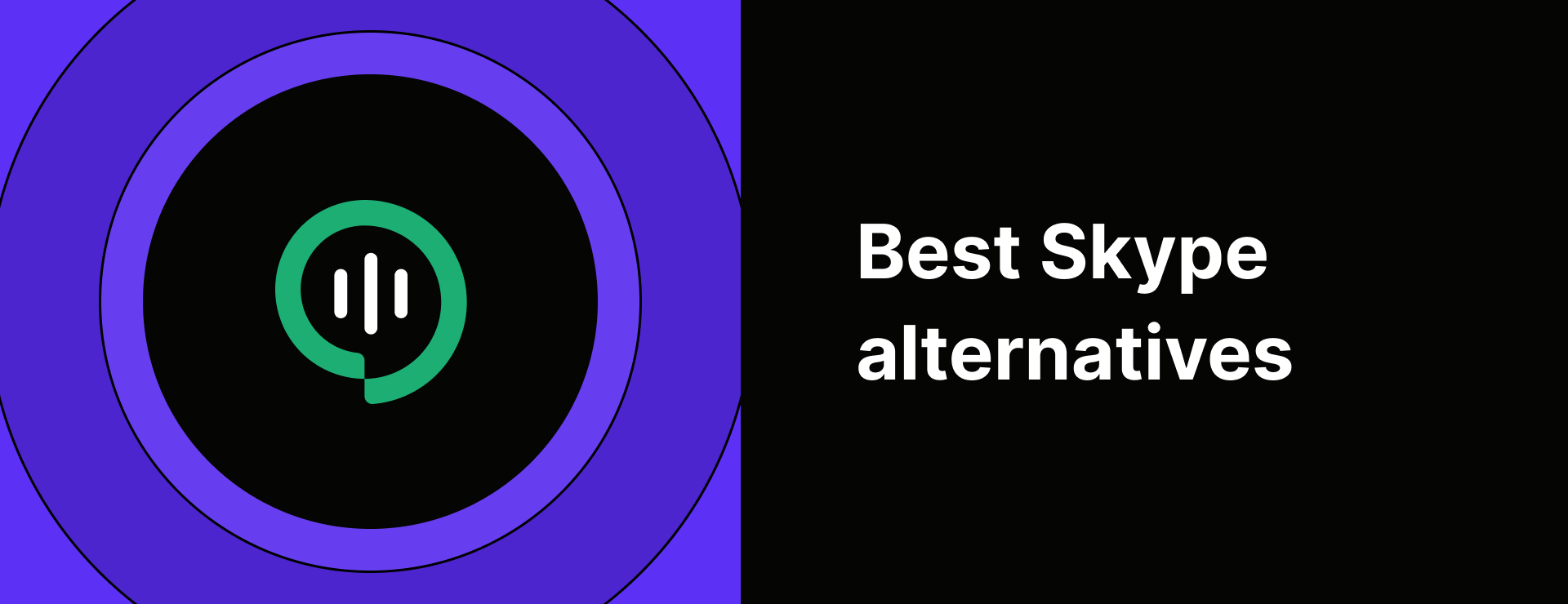
Well, Skype is shutting down.
Whether it’s catching up with friends or family overseas, running a business in another location, or using a Skype as a second phone number, finding a solid Skype alternative is now officially on the to-do list for a lot of people.
After more than two decades, Microsoft is pulling the plug on Skype in May 2025.
The good news? There are plenty of Skype alternatives out there in the market.
Some are built for business calls, others shine in video meetings, and a few manage to do both really well. So, which one’s right for you?
That’s where this guide comes in. We’ll walk you through the best Skype alternatives based on what you need – whether you’re on Windows, Mac, iPhone, or Android.
Best Skype alternatives
Here are some of the best Skype alternatives and competitors. We’ve done the research.
1. iTeleCenter: The best Skype alternative for voice calling and texting
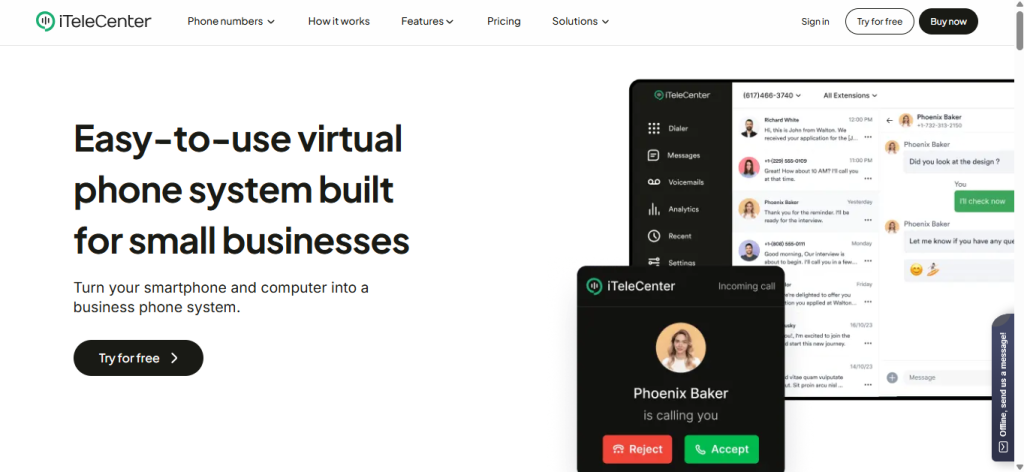
iTeleCenter is a powerful VoIP system designed to grow with your business. Whether you’re a solopreneur or managing a team, iTeleCenter helps you stay on top of your calls and messages without the hassle.
The best part? You can call and text right from your computer, smartphone, or tablet, no extra hardware needed.
As your business expands, adding more users is easy. Each team member can have their own US, Canadian local or toll-free numbers, or you can share numbers across your team to make handling calls and messages more efficient.
Still clinging to Skype? It’s time to upgrade. Try iTeleCenter free for 14 days, and if you love it (you will), you can even port your existing US, Canadian, or North American toll-free number straight into the app.
| Feature | Skype | iTeleCenter |
|---|---|---|
| Voice calls | ✅ Yes | ✅ Yes |
| SMS & MMS messaging | ❌ No | ✅ Yes |
| Call forwarding | ✅ Yes | ✅ Yes |
| Call recording | ❌ No | ✅ Yes |
| SMS & MMS messaging | ❌ No | ✅ Yes |
| Automatic call distribution | ❌ No | ✅ Yes |
| Video calls | ✅ Yes | ❌ No |
| Integrations | ✅ Yes | ❌ No |
| Works on desktop & mobile | ✅ Yes | ✅ Yes |
Key features of iTeleCenter
- Multiple local (USA and Canadian phone numbers) and toll-free numbers
- Call forwarding
- SMS and MMS texting
- Auto attendant
- Voicemail to text transcription
- Automatic call recording
- Conference calling
- Auto-reply
- Call routing
- Business voicemail greeting
- Number porting
- Call blocking
- Web and mobile apps
iTeleCenter pricing
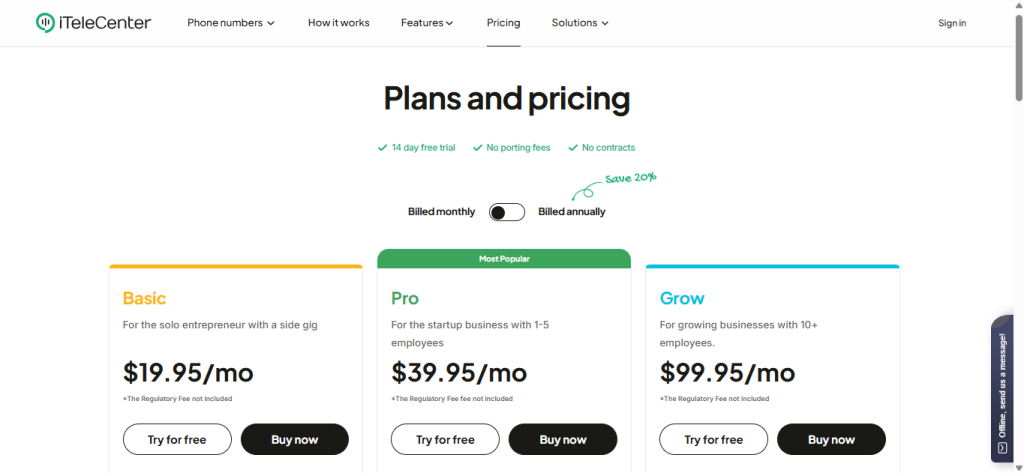
iTeleCenter has three affordable options:
- Basic – $15.96/month – Designed for solo entrepreneurs and side hustlers who need a professional phone system with essential calling and messaging features.
- Pro – $31.96/month (Most Popular ) – Ideal for small businesses (1-5 employees) looking for high calling minutes, multiple extensions, and advanced call management.
- Grow – $79.96/month – Built for growing businesses (10+ employees) that need scalable phone solutions, 100+ extensions, and multiple business numbers.
How to get a virtual number with iTeleCenter (It’s super easy)
Need a new local or toll free phone number? With iTeleCenter, you can get one in minutes – no complicated setup, no headaches. Just follow these 3 steps:
- Visit iTeleCenter – sign up or get a 14-day free trial to test it out.
- Pick you number – Choose a city or area code in the US that fits your needs.
- Start calling and texting – Once you’ve signed up, your virtual number is ready to go.
2. Microsoft Teams: A good alternative to Skype
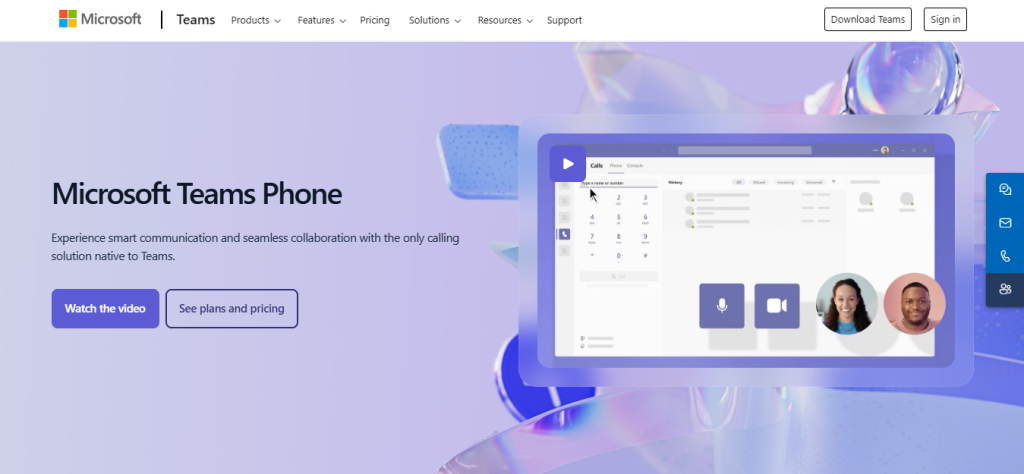
If you’re looking for a Skype alternative that plays well with Microsoft tools, then MS Teams is a good option.
What’s good about Microsoft Teams?
- Free version available (so you can test it out first)
- Tight integration with Microsoft 365 (if you’re already using their suite)
- 1:1 and group chat for easy communication
Where it kinda falls short
- Teams Phone costs extra (yep, not included)
- Basic phone features, nothing fancy
- Steep learning curve
Microsoft Teams pricing
Free Plan – Up to 100 meeting participants, 60-minute group meetings and 30-hour 1:1 calls
Teams Essentials – ($4/user/month) – 300 participants, 10GB storage, 30-hour meetings
Business Basic – $6/user/month, adds meeting recordings, breakout rooms, and analytics
Business Standard – $12.50/user/month, advanced security + full desktop versions of Microsoft apps
Teams Phone – $8/user/month, basic VoIP & PSTN calling (requires a separate phone plan)
Our verdict?
- If you’re already using Microsoft 365, Teams is a solid Skype alternative.
- If you just need a business phone system, look elsewhere, Teams Phone is pretty basic.
3. Zoom: The Skype alternative since COVID

By now, everyone knows Zoom, it’s almost a household name. Whether for business meetings or virtual happy hours, Zoom is one of the most widely used video conferencing tools out there.
But they also have a VoIP phone solution.
What’s good about Zoom?
- Free version available
- Quick and easy setup (you’ll be up and running fast)
- 100+ attendees in meetings (even on the free plan)
- Zoom Phone add-on for VoIP calls
Where Zoom kinda falls short
- Expensive add-ons for larger audiences and premium features
- Standalone Zoom Phone plan is pricey
- Their Free plan has a 40-minute meeting cap
Zoom pricing plans
Zoom’s video conferencing plans:
- Free Plan – Up to 100 participants, 40-minute group meetings, team chat, whiteboard
- Pro – $12.41/user/month – Unlimited 30-hour meetings, premium apps, 5GB cloud recording
- Business – $16.65/user/month, 10 licenses required – 300 participants, company branding, managed domains
- Business Plus – $20.83/user/month, 10 licenses required – 10GB cloud storage, AI captions, cloud phone system
Enterprise – Custom Pricing – Up to 1,000 attendees, encryption, conference room integration
Zoom Phone pricing
- US & Canada Metered – $10/user/month – Pay-per-minute calls
- US & Canada Unlimited – $15/user/month – Unlimited calling, optional 19-country add-on
- Global Select – $20/user/month – Unlimited domestic calls in 40+ countries (but no SMS/MMS support)
Our verdict?
- Zoom is great for video conferencing. It’s simple, reliable, and widely used.
- Zoom Phone is okay, but quite pricey – if you’re already using Zoom Business, it’s worth considering.
- If you need a solid business phone system, look elsewhere.
4. Google Meet: The Skype alternative for Google Workspace users
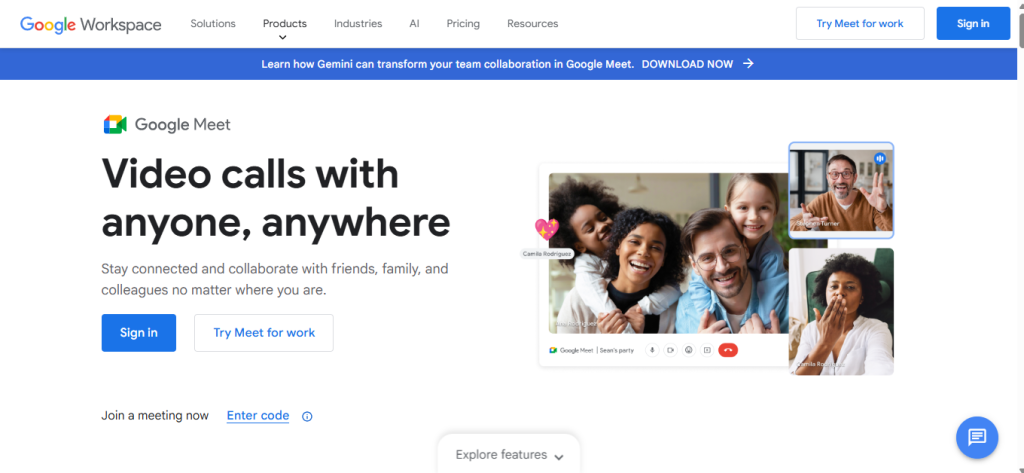
If you have a Google account (which, let’s be real, everyone), you already have access to Google Meet for free. You can fire up a video meeting right from your browser, no downloads needed, with up to 100 participants for an hour.
But if you want to record meetings, dial in via phone etc., you’ll need to go for the paid plan or a Google Workspace subscription.
For companies already using Google Workspace, Google Meet is a good option
Key features of Google Meet
- Works with Gmail & Google Apps – Seamlessly integrates with your business email and Google’s suite of tools.
- Video & voice conferencing – Host virtual meetings with ease.
- Longer meeting durations – Up to 24-hour meetings (requires you to upgrade).
- Dial in phone numbers – US & international numbers available (requires you to upgrade)
- Digital whiteboarding – Brainstorm ideas with your team in real time.
- Meeting recordings – Save recordings to Google Drive (available for Business Standard & higher
Google Meet Pricing
Since Google Meet is part of Google Workspace, pricing depends on the plan you choose. Plans are based on active users per month.
- Free Plan – For personal use. Host up to 100 participants with unlimited one-hour meetings, chat, screen share and Google/Microsoft app integrations.
- Business Starter – $7/user/month. 24-hour meetings for 100 participants, dial-in numbers, digital whiteboarding & team messaging.
- Business Essentials – $14/user/month. 150 participants, hand raise, polling, breakout rooms and meeting recordings in Google Drive.
- Business Plus – $22/user/month. 500 participants, 5 TB pooled storage, advanced security and attendance tracking.
- Enterprise – Custom pricing. Up to 1,000 participants, noise cancellation, in-domain live streaming and premium support.
Our verdict?
If your team is already using Google tools, G Meet makes total sense. But if you’re working with clients or partners who aren’t on Google Workspace, they might find the platform a bit tricky to navigate.
5. Webex: A video conferencing option

Webex Meet, built by Cisco, is a well-known choice for video conferencing, online meetings and webinars.
It’s useful for businesses that want more control over admin settings.
Webex Meet key features
- Meetings up to 24 hours (with an upgrade)
- Up to 200 attendees per meeting (1,000 for Enterprise)
- Interactive whiteboarding for brainstorming sessions
- Secure lobby to prevent unauthorized access
- Move meetings seamlessly from desktop to mobile
- Custom stage layouts for pinning videos and shared content
- Meeting recording with local and cloud storage options
Webex Meet pricing
Free plan – Up to 100 participants, 40-minute meetings, screen sharing, chat.
Meet plan – $12 per host/month. Up to 200 participants, 24-hour meetings, 10GB cloud storage, transcription, polling.
Suite (Meet + Call Plan) – $22.50 per user/month. Adds unlimited domestic calling, call forwarding, extensions and 6-way conference calls.
Enterprise – Contact Webex for pricing. Up to 1,000 participants, live streaming, call queue, voicemail-to-email.
Try out the best business phone alternative to Skype
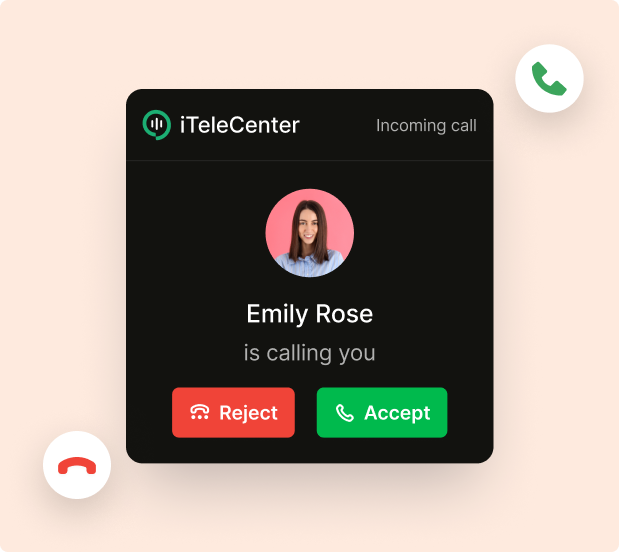
One thing’s clear from this list of Skype alternatives .. there’s no single app that does it all.
Every business has different needs. Maybe you need a solid video conferencing platform, but you also want a reliable phone system to give your business a professional touch.
The good news? The perfect combo is out there. As you explore Skype alternatives, consider pairing your video meetings with iTeleCenter for a business phone system that keeps you connected.
Want to see how it fits into your workflow? Try iTeleCenter for free today!
Frequently asked questions
What is the best alternative to Skype?
The best Skype alternative really depends on what you're looking for:
For business communication: iTeleCenter is a solid choice with calling, messaging, and other advanced call management features.
For team collaboration: Slack and Google Meet provide messaging, file sharing, and video conferencing for internal teams.
For personal use: WhatsApp, FaceTime and Zoom work well for casual calls and video chats.
What is replacing Skype?
Microsoft is pulling the plugs on Skype in favor of Microsoft Teams, which integrates seamlessly with Microsoft 365 and offers built-in security, file sharing, meeting recordings, etc.
While businesses that relied on Skype for Business have already transitioned to Teams, many entrepreneurs and small businesses are opting for iTeleCenter instead, thanks to its VoIP capabilities, call tracking, and other business phone features. With Skype shutting down in May 2025, now is the time to decide whether Microsoft Teams or a more feature-rich platform like iTeleCenter is the right choice for your business.
Why is Skype shutting down?
We assume Microsoft is shutting down Skype just couldn’t keep up.
With platforms and apps similar to Skype like Zoom, Slack, iTeleCenter, and Microsoft Teams offering better features, security and integrations, Skype lost its edge. Rather than keeping it on life support, Microsoft looks like it's going all-in on Teams as the future of business and personal communication.
Does anybody use Skype anymore?
Yes, Skype is still around, but let’s be real - it’s not really the go-to choice anymore.
Businesses have upgraded to Microsoft Teams, iTeleCenter, and other platforms for professional communication. If you’re still hanging onto Skype, now’s the perfect time to switch to something more modern before it officially shuts down in 2025.
Table of Contents
Test drive iTeleCenter for free
Try for free


